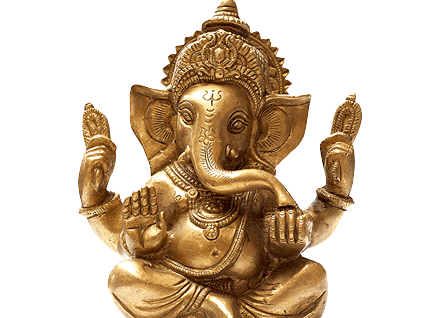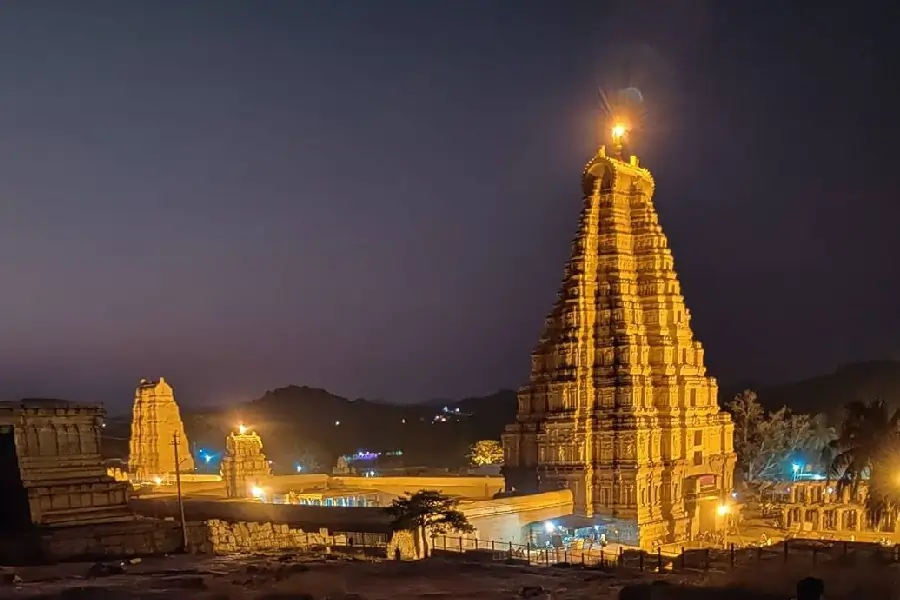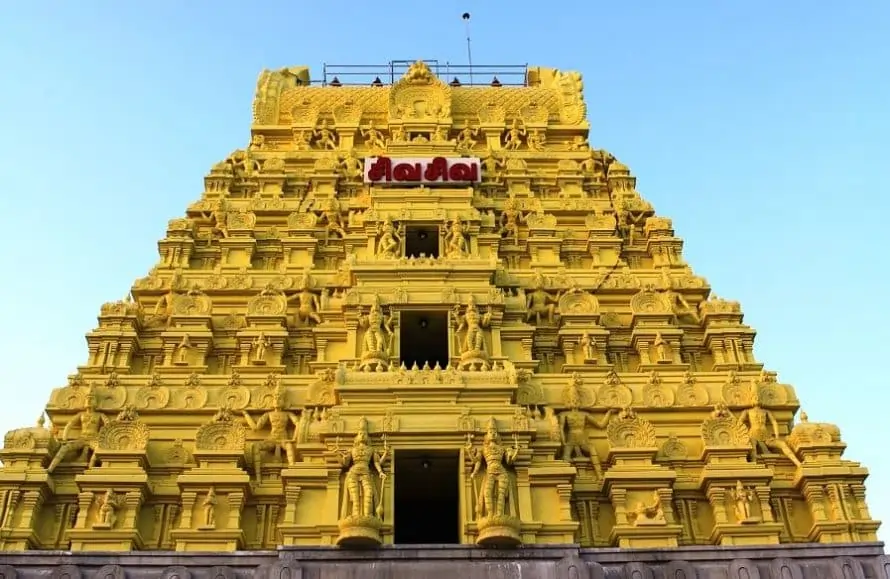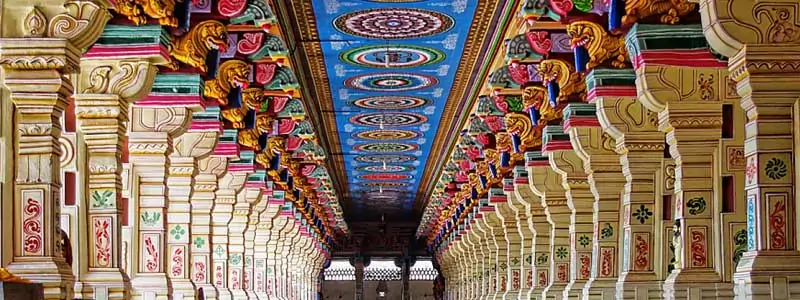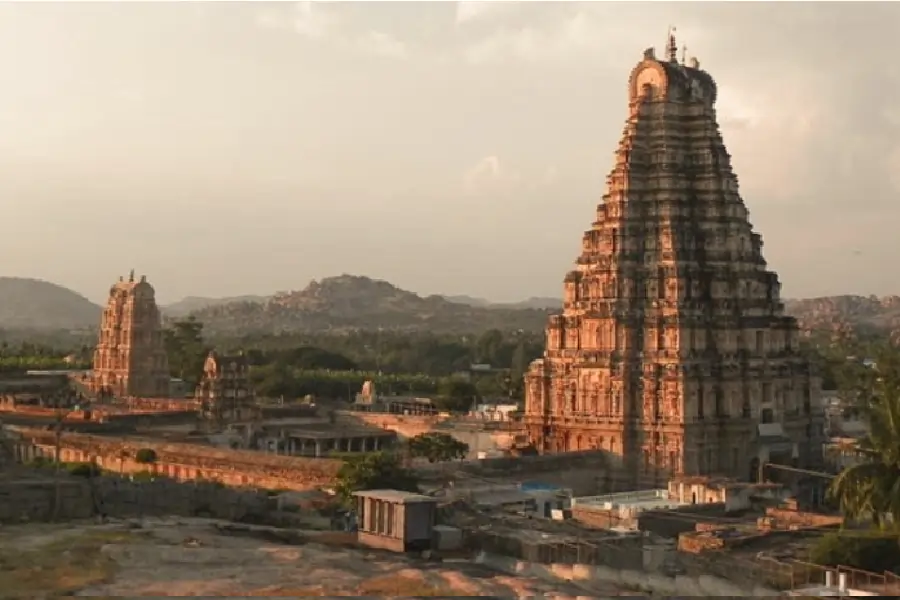
Gangotri Temple Uttarkashi Uttarakhand

In Hinduism, the River Ganga is believed to be very sacred, so sacred, it is referred to as “Maan Ganga “. Just like the river, the water of Ganga (called Gangajal) is believed to very sacred. People believe that taking a dip in the River Ganga will absolve all their sins and flaws and help them attain moksha (salvation).
The River Ganga symbolises purity. That is why Gangajal is used for various religious and spiritual things to remove evil vibes. Hindus believe that Gangajal has several unique properties. But a study conducted by the Ministry of Water Resources has found that the water of Ganga water contains a higher proportion of microorganisms that have anti-bacterial properties. That is why gangajal does not spoil even after storing for years.
Information about Gangotri Temple
| Temple | Information |
|---|---|
| Idol | Goddess Ganga |
| Location | Uttarkashi, Uttarakhand, India |
| Creator | Nepalese General, Amar Singh Thapa and Maharaja of Jaipur |
About Gangotri Town Uttarkashi
Gangotri is a small town in Uttarkashi. It is one of the highest pilgrimages located at a height of 10,200 feet (approx. 3,415 m). Gangotri is considered the most sacred and holy place from one of the Chaar Dhaams. Uttarkashi has the temple of Goddess Ganga in its heart. It is believed, Ganga is the most sacred river, which descended from heaven to earth at Gangotri when Lord Shiva released the sacred river from the lock of his hair.
History and Legends Associated with Gangotri Temple Uttarkashi
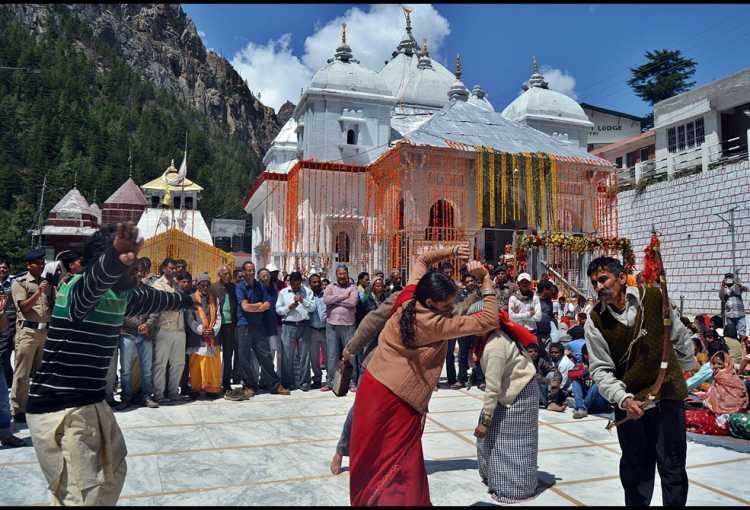
In the 18th century, it was built by Nepalese General Amar Singh Thapa and later it was reconstructed by the Maharaja of Jaipur.
The origin of the Gangotri is at ‘Gaumukh’ (mouth of a cow) in the Gangotri glaciers, which is just 19 km away from the Gangotri and is also known as Chhota Chaar Dhaam temple in Garhwal. Ancient king Bhagirath performed penance to bring Ganga down from heaven and then it named Bhagirathi. It gets its name Ganga after a merge with the Alaknanda river of Uttarakhand.
The Architecture of Gangotri Temple, Uttarakhand
It is simply constructed in the Nagara style with white marble stones. The temple has 5 small apexes (Shikhar) with a height of 20 feet. There is a Mandap in front of the main Sanctorum (garbha-gruha) where devotees assemble for prayer and darshan. The inner sanctum, apart from the idol of Goddess Ganga, has idols of Goddess Yamuna, Goddess Annapurna, Goddess Saraswati, and Goddess Lakshmi. The set of Idols is completed by the idol of Bhagirath and the Sage Adi Sankara.
With the main temple of Maan Ganga, there are four small temples of Lord Shiva, Lord Ganesha, Lord Hanuman and Goddess Bhagirathi.
Near the temple, there is a natural Shivling submerged underwater. This is visible in winter when the water level decreases. As per the mythology, this was the place where Lord Shiva sat and released Ganga from the lock of his hair and divided the powerful Ganga into several, which are named Alaknanda, Dhauliganga, Mandakini, Pindar, Mandakini and Bhagirathi.
How to Reach Gangotri Temple in Uttarakhand?
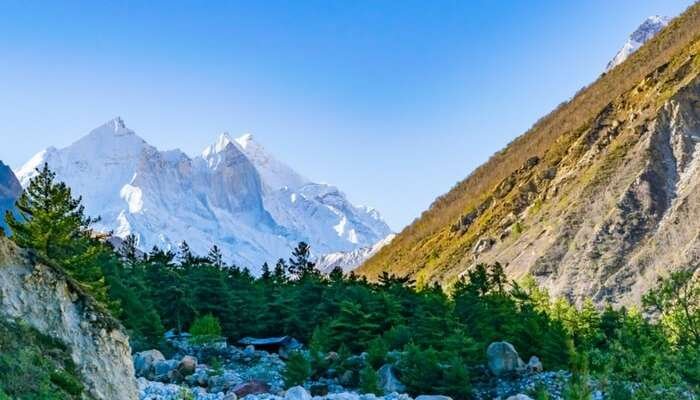
Gangotri is located at a distance of 300 km from Dehradun, 250 km from the Rishikesh and 105 km from the Uttarkashi.
By Air
The nearest airport is Jolly Grant Airport at Dehradun, which is situated between Dehradun, Haridwar and Rishikesh. It is well connected to Delhi. You can easily get a bus from the airport to reach Gangotri.
By Train
The nearest station to Gangotri is Rishikesh, which is at a distance of 280 km. You can easily get a bus from Rishikesh to Gangotri.
By Road
Gangotri has a well-developed road network from all the major destinations of Uttarakhand. Buses and taxis are easily available from nearby cities like Rishikesh, Uttarkashi, Dehradun, Tehri Garhwal.
Pooja Vidhi Performed at Gangotri Temple
The Gangotri temple is opened for the public on Akshaya Tritiya in April or May. This is an annual spring festival of Hindu and Jain, which signify “The third day of unending prosperity”. It is closed on Yama Dwitiya (Bhai Dooj) in October or November every year.
At every Hindu festival, there is a special pooja performed with different rituals. The opening time starts with the Mangal Aarti at 6:00 AM and closing held with Sandhya Aarti at 7:30 PM. But in the early morning, there is a special pooja Utthan and Shringar puja at 4 AM in this pooja devotees are not allowed to attend.
Main Festival at Temple of Gangotri
Ganga Dussehra is the main festival celebrated in the months of May-June. According to the Hindu calendar, it is celebrated on the Dashmi tithi of Jyeshta. It is believed that during these 10 days of the festival get rid of their 10 major mortal sins. This can be a lifetime experience just by witnessing the night aarti of Ganga.
Diwali
Diwali is also the closing time of the temple because of the heavy winters. On this day, the idol of Maan Ganga is transported to the Mukhyamath temple. The temple is decorated beautifully and lit up with diyas.
Akshaya Tritiya
This festival celebrated as a “bringing back” ceremony, a process of reinstating the Idol of Goddess Ganga with huge participation of people singing and dancing all around. This is celebrated in April-May every year after the winter break. There is a special Shringar Puja offered on Ganga Saptami in the month of Vaisakh (April) when Ganga is said to have descended to earth.
Many other festivals are celebrated at the temple like Janmashtami, Vijaya Dashmi, Dussehra, etc.
Best Time to Visit Gangotri Temple
The best time to visit the Gangotri temple is from April to June. September and October are also good months. Avoid months of July and August, which are the monsoon months, when there is heavy rains and instance of rock falling.During winters, the doors of the temples are closed for the devotees.
Important Points about Gangotri Temple Uttarkashi Uttarakhand
- The opening timing of the temple in the morning is 6:15 AM to 2:00 PM and evening timing is 3:00 PM to 9:30 PM, it remains close at the noon for an hour.
- The journey of Chaar Dhaams starts with Yamunotri, then proceeds to Gangotri, Kedarnath and finally at Badrinath.
- The water of river Ganga is known as Gangajal, people kept this water at their home, so they can use this on every religious occasion it is the belief that Ganga’s water never gets spoiled.
- The opening and closing of the temple are prepared according to the Hindu calendar on Akshaya Tritiya and Yama Dwitiya respectively. Sometimes it depends on the weather conditions too.
- There are some beautiful places like Maneria (92km away), Kedar Tal (18kms), Harsil (72kms), Tehri, Uttarkashi and many more where tourist get the wonderful experience of trekking.
- The entry is free of cost in temples but as per the government of Uttarakhand, a biometric registration is needed, you can register yourself online or offline mode.
- Photography and videography are not allowed in the temple.

Frequently Asked Questions about Temple of Gangotri Uttarakhand
Q. Is the temple open throughout the year?
Ans: Every year, the main doors of the Chaar Dhaams are open to a devotee from April and May to July and September, temple doors are closed for six months due to the heavy snowfall. Reopen dates are always declared by the temple committee as per the weather condition.
Q. Is registration needed to visit Gangotri?
Ans: Yes, a biometric is needed to visit Badrinath, Kedarnath, Gangotri, Yamunotri or Hemkund Sahib in Uttarakhand. The government is providing both online and offline options for registration.
Q. Why makes the water of the River Ganga unique?
Ans: Ganga River contains 25 times more oxygen compared to other rivers of the world and it has a unique property to remain fresh for a long period. It has a higher proportion of microorganisms that have anti-bacterial properties. As per the Hindu belief, just by taking a dip in Ganga, their all sins will absolve and they can lead to a painless death.
Q. Where is the Ganga River originated?
Ans: It is considered that the Ganga River is originated in the Himalayas Mountains at Gomukh as a Gangotri glacier, with the melting of this glacier forms the fresh and cold water of the Bhagirathi River and then mixed with the Alaknanda River and form the Ganga River.
Q. How many sets of Idols are in the temple of Gangotri?
Ans: The main idol of Maan Ganga is placed and beside her, there are Goddess Yamuna, Annapurna, Saraswati, and Lakshmi is situated. The set of Idols is completed by the idol of Bhagirath and the Sage Adi Sankara.
Related Post:

